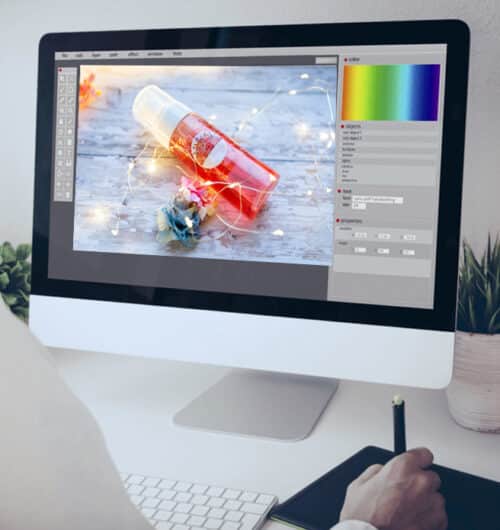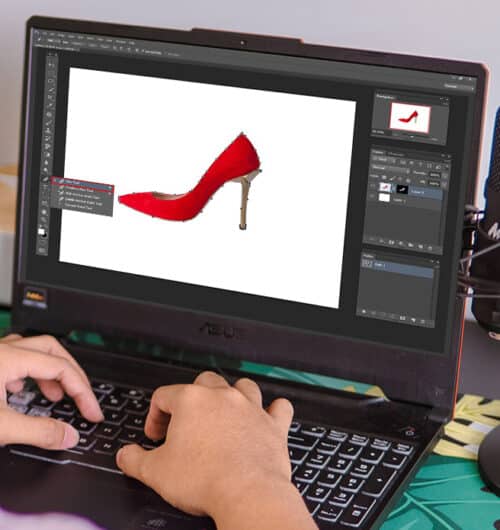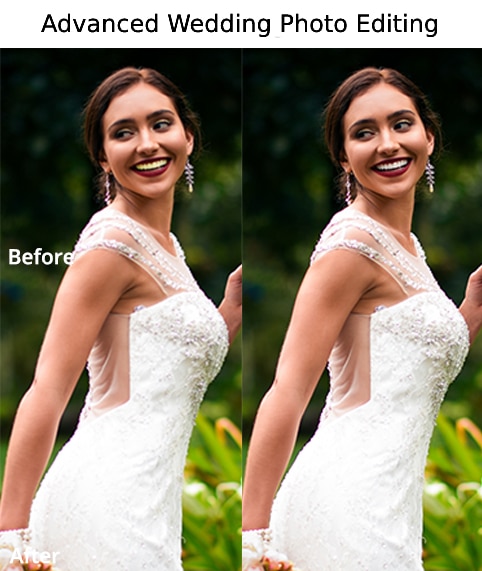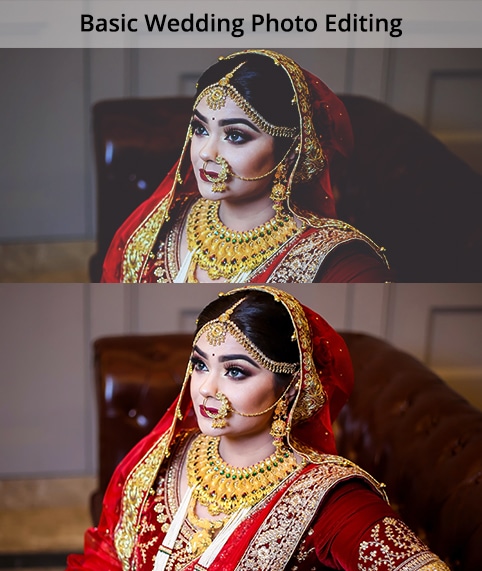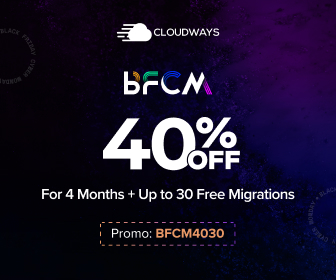Since the ages of human expression, storytelling has enabled humans to thrive. Stories let communities pass on knowledge and social habits and share beliefs and values with others. In short, stories help us relate to others' lives.
Storytelling isn’t just reserved for people, though it has vast content. Brands need stories to stand out in today’s vast marketing strategy best video editing could help you to make a stories which can win because they elicit emotions, and lessons and affect the decision-making process.
Moreover, video storytelling is important to any brand’s education, entertainment, or marketing strategy. It brings life to ideas and personalities and lets you convey your brand’s character in just a few minutes. Let’s understand the art of storytelling through the video editing.
What is video storytelling?
Video storytelling is a marketing technique that let people experience a company, product, or service through a creative and visual lens.
Video is uniquely immersive and engaging, more so than other visual marketing strategies like images, GIFs, and infographics.
Moreover, over 70% of people reported happier moods and reduced stress when watching videos to shop or learn about the product.
And about 76% of respondents said that product and service explainer videos help them make a buying decision.
The importance of storytelling in video content
1) Storytelling is beyond selling marketing
Making commercial videos does not mean you always have to sell something. It is beyond the selling strategy that can share your brand values.
People get bored of watching sales marketing videos again and again when they appear on the marketing channel. But the stories demonstrating real-life incidents, problems, cultures, and relations catch customers' attention.
It feels as if the viewer that are sharing their experiences with the brand which shows how effective it is for the people and the benefits they gain using the brand.
2) Increases brand awareness
Stories create an impression on customers' minds. Humans can easily forget the still images, posters, and pictures that display the main benefits of the services and products offered by the businesses. But storytelling is somewhat capturing emotional memory in the human brain.
The commercial video storytelling does not need to be longer and narrative. Add valuable information and epic content to it to make it more engaging to your audience.
It captures space in the customer's mind that makes the brands memorable to consider them in making purchase decisions.
3) Stories create an emotional connection
Stories are powerful that enable the viewers to connect with the main characters in stories. It makes them feel like going through the same situations and try to relate to them. It is the most effective way to entice customers and increase their relativity with the brands.
The short stories shown in 30-60- seconds are the most exciting way of increasing the buying decision of the customers and an indirect way of inviting them to invest in your brands.
4) Don’t just be informative
Listening to stories does not create much impact and develop connections with customers. The light, sound, visual settings, recording angles and showing of emotions connection more than words.
Communicating the attributes and uniqueness of the brand gives good experiences to the customers to improve video marketing; your stories should contain the best content to convince consumers about how you can solve their problems by having the brand you offer. Share stories that reveal the customer experiences who made your brands.
How video editing plays a crucial role in storytelling
Video editing is part of the visual storytelling process that lets you change and perfect your video's colour grading, music, lighting and pacing to create the right mood for the message you’re trying to send.
Video editing software is the most important tool. This software helps video editors manipulate video and create a polished, complete story, and professional and beginner video editors are able to choose from a massive variety of software options.
Video editing is important because it is important to blending images and sounds to make you feel emotionally connected and sometimes truly there in the story form.
Understanding the Basics of Video Editing
A) Types of cuts
1. Standard cut
The standard cut, known as the hard cut technique, is an old editing technique where one scene goes to the next with no visual transition. In a script, cuts like these are called “smash cuts.”
2. J-Cut
A J-cut is a technique where the audio from the next clip overlaps with the video of the previous video clip. This type of editing technique is known as a split edit technique. This cut works as a new audio track sticks out to the left of the new video track above it to resemble the shape of the letter J.
3. L-Cut
An L-cut is the opposite of a J-cut, and even this is known as a split edit. It cuts to a new scene while the audio from the previous shot continues. For example, if you had Clip A and Clip B, you would continue audio from Clip A while cutting to the video of Clip B from the video.
4. Jump cut
Jump cuts are named for the fact that they “jump” ahead or backwards in a video chronology. They indicate a certain time.
5. Cross-cut
Cross-cutting is the act of cutting back and forth of scene between two sequences in a film. You can cross-cut between a pair of scenes, or you can cross-cut between multiple scenes in multiple locations from the film.
6. Parallel editing
Parallel editing uses the same back-and-forth technique which gets in cross-cutting, but its purpose is slightly different. Specifically, parallel editing is important to strive for the illusion that two scenes are happening simultaneously. Instead, it intercuts to draw thematic contrast.
7. Match cut
A match cut is a connection between two scenes by showing a common element in back-to-back shots.
8. Cutting on action
Cutting on action means inserting a cut in the middle of an action sequence, like when one person throws any element and we cut to the point of view of their 2 person watching the fist hurtle toward them.
9. Cutaways
A cutaway is a summary visit from a principal scene to a secondary scene in a video that’s only tangentially related.
10. Montage
A montage is a series of intercut video scenes that give you a narrative, often without dialogue. By cutting back and forth between various sequences of scenes, directors and editors can reveal how multiple storylines converge into a unified film.
Montage sequences often turn up when a character undergoes a transformation whether literal or metaphorical period.
B) Types of transitions
1) The straight cut
The straight cut, the hard cut, the standard cut, or you can even say the A to B cut is one of the most basic transitions to get to the next shot in the same scene. It’s simply a transition from one shot to another, with no effects in that.
Straight cuts are the foundation of the continuity editing process, this process of maintaining a film’s cohesiveness throughout its runtime.
2) The jump cut
A more advanced version of the straight cut you can say is the jump cut. To create a jump cut transition, remove a section of one continuous shot in the scene, so the audience has the feeling of lurching forward through time.
3) The dissolve
The dissolve is another common transition that either fades a shot into black or white or blends two scenes together in the video. It’s often used to signal to the audience that they are entering a new scene and that time has passed before.
4) Sound transitions
Some transitions can so jerk visually that they need sound to accompany the leap. This is very common in action sequences, where poor sound mixing can create a noise of sound and motion. Ensuring that each shot leads into the next situation, in terms of both visuals and sound, is important.
C) Using pacing and rhythm to enhance storytelling
Movies are a time-based medium, and the pacing is an important element of your storytelling video. Pacing is how you progress your story over time. You could present it in real-time — when the action taking place and the recording of it is 1:1 — or manipulate it in powerful ways, such as compressing a two-week cross-country road trip into a seven-minute time-lapse short.
Long, continuous shots create the feeling of actual time, which, like real life, can seem slow when little is happening or rapid if a lot of action is happening. Frequent cuts and short shots quicken the pace, heighten our state of alert, and make time advance more quickly — they can also exhaust the audience after a while.
Depending on the length of your video, you might use a variety of pacing techniques for a range of sequences. Consider what you need to tell your audience about the emotional connection and motivations of your characters at each point in the story and how the pacing can help to communicate that in the scene.
While the pacing is the role of the editor, writers and directors have to consider it even before shooting begins, since an editor can only work with existing footage of the film. To that end, if an editor needs to lengthen a scene to help the pacing of a story but the footage isn’t there, you can look to stock for cutaway shots that slow the pace or gives you contextual cues.
Rhythm is the final result of pacing. An obvious way to create a sense of rhythm is to edit to audio. Using the soundtrack beat to time your edits, you can create a highly rhythmic sensation that works well in shorter formats and music videos.
D) The role of audio in video editing and storytelling
Audio is important because it engages audiences: it helps deliver information, increases the production value, evokes emotional connection, emphasises what’s on the screen and is used to indicate mood with the characters.
When put to good use, language, audio effects, music, and even silence, can elevate your video dramatically.
Bad audio, however, can ruin your story. And yet, audio is often left as an afterthought for post-production, which is difficult because no amount of editing magic can fix the bad sound.
Creating a Narrative Structure in Video Editing
Establishing the setting and characters
This is the viewer's introduction to the story. The exposition offers background information to prime the audience for the rest of the story, which includes introducing the main character(s) (the “who”), setting (the “where”), and circumstances or time period (the “when”).
Building the story arc and tension
This is the biggest point of tension in your storyline, and often the point at which all the different subplots and characters converge into the story. Typically, the arc requires the main character to face the truth or make an important choice.
Resolving the conflict and delivering a message
During the falling action, the conflict gives way to a resolution to end the video. Loose ends are tied up, and tension begins to dissipate in the film. Remember a conflict should deliver a message about how your story will get ends.
The Role of Visual Elements in Video Editing
The use of shot composition and framing to convey emotions and themes
The term “shot composition” refers to the arrangement of shots or frames in a video. Shot composition is considered an important aspect of achieving certain aesthetic effects and conveying meaning in the scene. The most common techniques used by video editors are framing to convey an emotion connection with the characters, camera movement, depth of field (DOF), and cinematography.
Shot composition is more than arranging scene elements in a camera frame but also carries a theme. It is an art that combines all the elements to advance the story, reveal character and create emotion.
Using color grading and visual effects to enhance the mood and atmosphere
Colour grading is the post-production process by which an editor stylizes the colour scheme of footage by “painting” on top of what they’ve established through colour correction. Using editing software to design the footage—emphasizing a movie's visual tone and atmosphere, and making it look more cinematic.
Using colour grading for artistic purposes to ensure that the film's colour palette conveys a specific atmosphere, style, or emotional connection with the audience. Colour grading clarifies elements of a film's narrative, adding a distinct tint to flashbacks or scenes in a different location to differentiate them from the rest of the film.
Incorporating B-roll and establishing shots to create context and setting
B-roll is supplementary footage or alternative shots used in video storytelling, in contrast to your “A-roll,” which is your main footage or a primary shot of the film. By definition, the B-roll is secondary to the main image, and is important to the storytelling it's a kind of alternative or storytelling puzzle and a tool that can be greater than the sum of its parts.
When used correctly, the B-roll can supply the audience with information or context about the main subject of the scene. B-rolls can show the literal act of what’s being discussed on camera or show the location of where an event is taking place in the film.
Tips for Effective Storytelling in Video Editing
Keeping the audience engaged with effective pacing and flow
Figure out your storyboard what you think the story will look like and write a script to accompany it ahead of time as well. This will help you identify possible issues before you start shooting.
Try holding a brainstorm where there are good ideas and anyone can throw out any possibility coming. Worry about assessing those ideas, figuring out how they would work, and choosing one to execute later. Giving yourself and your team the freedom to be creative without restrictions will often lead to your best outcomes.
Creating a strong emotional connection with the viewer
One of the biggest reasons storytelling is so effective and resonates with an audience is that they convey emotions. To make your story appealing to the audience, when you start to develop your story idea, focus on the feelings you want to share with them.
But how do you convey a strong emotional connection?
To do it, you need to focus on other key elements of video storytelling. The colours, composition, theme, plot, storyline, and background music communicate emotional connections. You can choose one emotion you want to evoke in the story (it could be sadness, warmth, happiness, or hope), and share it for the whole theme in your video.
Crafting a clear and concise message
Focus on whatever story you’re telling be clear and don’t try to do too many things at once. Video storytelling is the most successful when it follows a clear and concise message.
Don’t fall into the trap of thinking that longer is better. Short stories can be just as compelling as long stories plus they have a better chance of holding your audience attention from beginning to end.
Summary
Good storytelling does more than create a sense of connection with the audience. They build familiarity and trust and allow the audience to enter the story where they are, making them more open to learning. Good stories telling lines can contain multiple meanings so they’re surprisingly economical in conveying complex ideas.
Video editing is the art of manipulating multiple film clips to create a single finished video composition. Video Editors cut together clips, add, remove, edit and mix sound, digitally alter and remove elements of the video, and add special effects in post-production.
Taking cues from the arts of cinematography and photography, video editing is an important component of producing video content. It is also a hidden art, as Video Editors strive to make their presence invisible, creating a seamless edit process that washes over audiences.

